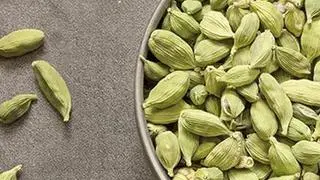Notwithstanding the erratic rainfall pattern, farmers have brought in an additional area of two per cent under kharif pulses such as tur, urad and moong this year. The erratic rainfall is seen having varying impact on different pulses crop.
While delayed planting in Rajasthan is likely to affect productivity of moong, excess rainfall in parts of Karnataka and Maharashtra could hit the quality of urad, trade sources said, adding that it is too early to estimate the crop size. Waterlogging triggered by excess rainfall during the first week of September is seen affecting the tur crop in Karnataka, which has the largest area.
However, Skymet-Gramcover, which released kharif crop outlook on Monday, has forecast increase in yields of pulses, despite delayed sowing. As per the actual rainfall recorded till August and the forecast for September, productivity is likely to be good in all States. The national average yield of pulses is expected to be around 702 kg/ha —14 kg higher than the last year yield of 688 kg, Skymet-Gramcover said.
10% higher output
Thus, pulses production is estimated to be around 10.24 million tonnes (14.60 million hectares) that will be 10 per cent higher from last year’s kharif production estimates of 9.31 million tonnes (13.51 million hectares), Skymet-Gramcover said.
“Though the Kharif crop has been sown a little more than last year, the actual output will be known only during the harvest time. If the crops face heavy rainfall activity during harvest period, we may see some damage to urad and moong crop. Rajasthan has seen a dry spell in August hence we may see a drastic reduction of moong production in Rajasthan. However, everything will be clear by end of September,” said Bimal Kothari, vice-chairman, Indian Pulses and Grains Association (IPGA). Though moong area has caught up in Rajasthan, which accounts for 70 per cent of the crop, there will be a loss of yield of around 50 per cent due to erratic rains, said Punit Bachhawat, Managing Director, Prakash Agro Mills in Ahmedabad.
Rajasthan initially faced dry weather due to the delayed arrival. “We had a dry patch and then excess rains. Based on the feedback from traders and market sources, we expect there will be crop of around 7-8 lakh tonnes against the annual kharif output of 12-13 lakh tonnes in Rajasathan,” Bachhawat said. The annual moong crop in the country is around 22-23 lakh tonnes. “On a conservative basis, the annual moong crop will be around 18-19 lakh tonnes this year,” Bachhawat added. In Karnataka and Maharasthra, moong harvest has been good, he said.
Suresh Agarwal, Chairman, All India Dal Mills Association, said the pulses crop is good in MP and parts of Maharashtra, although there has been some impact on urad. “There is no concern now as the recent rains have helped tur crop. If it rains in Rajasthan now, it should help the moong crop,” Agarwal said
Large excess rains in Kalaburgi and Bidar districts, the key pulses producing regions of Karnataka has left the growers concerned. “Waterlogging of fields and flooding of rivers and rivulets has impacted about 80 per cent of the tur area,” said Basavaraj Ingin, President, Karnataka Pradesh Redgram Growers Association.
Tur, a hardy crop, is currently in vegetative stage. Waterlogging of tur fields for over 48 hours triggers diseases such as root rot, Ingin said adding that the Government should carry out the assessment of crop losses and compensate growers immediately so that they can prepare for rabi sowings.
Santosh Langar, miller in Kalaburgi said about a tenth of tur crop could have been affected. Nitin Kalantri, a miller in Latur, said the urad quality will be affected by rains. However, he said the rains are good for tur, which will be harvested in December.








Comments
Comments have to be in English, and in full sentences. They cannot be abusive or personal. Please abide by our community guidelines for posting your comments.
We have migrated to a new commenting platform. If you are already a registered user of TheHindu Businessline and logged in, you may continue to engage with our articles. If you do not have an account please register and login to post comments. Users can access their older comments by logging into their accounts on Vuukle.